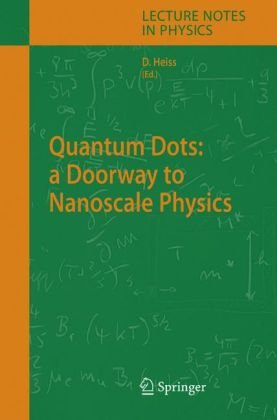

Most ebook files are in PDF format, so you can easily read them using various software such as Foxit Reader or directly on the Google Chrome browser.
Some ebook files are released by publishers in other formats such as .awz, .mobi, .epub, .fb2, etc. You may need to install specific software to read these formats on mobile/PC, such as Calibre.
Please read the tutorial at this link: https://ebookbell.com/faq
We offer FREE conversion to the popular formats you request; however, this may take some time. Therefore, right after payment, please email us, and we will try to provide the service as quickly as possible.
For some exceptional file formats or broken links (if any), please refrain from opening any disputes. Instead, email us first, and we will try to assist within a maximum of 6 hours.
EbookBell Team

0.0
0 reviewsQuantum dots, often denoted artificial atoms, are the exquisite tools by which quantum behavior can be probed on a scale appreciably larger than the atomic scale, that is on the nanometer scale. In this way, the physics of the devices is closer to classical physics than that of atomic physics but they are still sufficiently small to clearly exhibit quantum phenomena. The present volume is devoted to an introduction to some of these fascinating aspects, addressing in particular graduate students and young researchers in the field. In the first lecture by R. Shankar the general theoretical aspects of Fermi liquids are addressed, in particular the renormalization group approach. This is then aptly applied to large quantum dots. A completely different approach is encountered in the second contribution by J.M. Elzerman et al. in that it is a thorough experimental expose of what can be done or expected in the study of small quantum dots. Here the emphasis lies on the electron spin to be used as a qubit. In the third lecture series, by M. Pustilnik and Leonid I. Glazman mechanisms of low-temperature electronic transport through a quantum dot -- weakly coupled to two conducting leads -- are reviewed. The fourth series of lectures by C.W.J. Beenakker deals with a very interesting aspect of nanophysics: a peculiar property of superconducting mirrors discovered by Andreev about forty years ago and still a challenge to experimental physicists.